This article is part of our The Whole Picture of Public Education project, which uses state and national data to answer the question: what influences student learning? For more information, visit www.ReachingHigherNH.org/wholepic
In our The Whole Picture of Public Education series, we’ve been exploring what influences student learning in New Hampshire – and so far, we’ve covered that the family’s income is the best predictor of proficiency in elementary school.
But as students get older, the educational attainment of the community becomes an additional key predictor of academic proficiency.
We formed two hypotheses as to why a community’s educational attainment might affect student learning. First, older students have the opportunity to engage with their communities through sports, jobs, volunteer opportunities, and more, allowing them to develop relationships with mentors and networks. Second, educational attainment may indirectly reflect other community-level factors that influence learning.
Overall, the finding underscored the importance of the community around our students, and how our public schools can help build students’ social capital.
Public schools can help students by engaging families and communities in learning, from meaningful community engagement to programs like Extended Learning Opportunities (ELOs) and Career and Technical Education (CTE), which connect students to diverse networks that are aligned with their interests and needs.
Examining the findings
In our analysis, for both eighth and eleventh grades, students in communities with higher educational attainment – specifically, high concentrations of four-year college graduates – tended to outperform their counterparts in communities with lower educational attainment levels, in both reading and math.
The graph below shows each district’s student proficiency rates for math and reading, and the percentage of adults over the age of 25 who live in the community and have earned more than a high school diploma (including some college, a two- or four-year college degree, and/or a graduate or professional degree). The first graph shows districts’ fourth grade proficiency rates, followed by eighth grade and eleventh grade proficiency rates.
Find your district below, using the search box in the upper right corner:
Exploring the hypotheses
Our first hypothesis as to why the educational attainment of a community influences learning involves opportunities: Older students have the opportunity to engage with the community-at-large, both with and without the aid of their parents or guardians. They may have mentors who encourage their interests and passions, who can help guide them in choosing classes, finding internships, or seeking other opportunities to develop and pursue their goals and also support them in staying on track as they experience challenges along the way.
As middle and high school students explore interests for jobs and careers, they benefit from direct connections with role models in the community, as well as from networks of adults who provide guidance, reminders, and expectations.
Research suggests that relationships are critical to closing gaps in educational opportunity.9 . From staying in or returning to high school, to preparing for and navigating career and education pathways, our networks can help provide guidance, insight, and connections to make the process easier (or in some cases, make it even possible).
Our second hypothesis involves the availability of data. We found that in New Hampshire, much like the rest of the nation, higher educational attainment leads to greater economic security: larger concentrations of community members with bachelor’s degrees were associated with higher household incomes and lower unemployment rates. Educational attainment was also associated with teacher salaries in our findings: communities with greater concentrations of bachelor’s and graduate degrees tend to pay their teachers more.
We suspect that the educational attainment variable indirectly reflects other community- level factors for which we do not have data. For example, we were unable to collect community- level data on health and wellness outcomes, environmental factors, community violence, substance use, mental health, and childhood trauma, abuse, and neglect, but research shows clear relationships between these factors and student learning. Higher education is positively associated with many of these outcomes, but these studies were outside of the scope of this project.
Harnessing the power of communities for the benefit of students
As we think about schooling and the factors that impact student learning, this second finding (click here to see our first finding) underscores the role of the community. As students get older, they branch out from their families and into their school and community through jobs, after-school activities, volunteer work, and more. Along the way, they pick up critical connections – or social capital – that help them. These connections include mentors, friends, and other support systems.
Schools can be powerful facilitators of social capital, helping connect students to diverse networks that are aligned with a multitude of student interests or needs, from aspirations and academic achievement, to better attendance, improved behavior, and persistence in school. Schools can also serve as community hubs, where students can access services that help them arrive to class ready to learn.
Schools can help leverage the strengths of students, families, staff, and community members to create a positive, engaging, and supportive learning environment where students thrive. A crucial first step is early and often community, family, and student engagement, where stakeholders come together to build a vision for their schools, assess local needs, and partner with the broader community to offer important resources.
Schools frequently engage partners to provide students with additional enriching experiences. Incorporating academic support and enrichment activities like STEM clubs, internships, art programs, and more, into the school increases access and opportunities for all students.
This is the third part of our comprehensive analysis on student learning in New Hampshire, called The Whole Picture of Public Education. Check out more of our series:
- Part one: What influences student learning in New Hampshire?
- Part two: How economic security affects our youngest learners
- Part four: How do our teachers, classrooms, and other factors influence student learning?
Check out our other resources and tools:
- A comprehensive report, which uses five stories of New Hampshire families to guide readers through the project’s core findings and encourages them to consider their real-life implications;
- Interactive data visualizations, which allow users to explore and ask questions of the data;
- Community and school district profiles, which help individuals build a better understanding of their own communities (to be released soon); and,
- The methodology of the study, including appendices for our statistical models.












You must be logged in to post a comment.